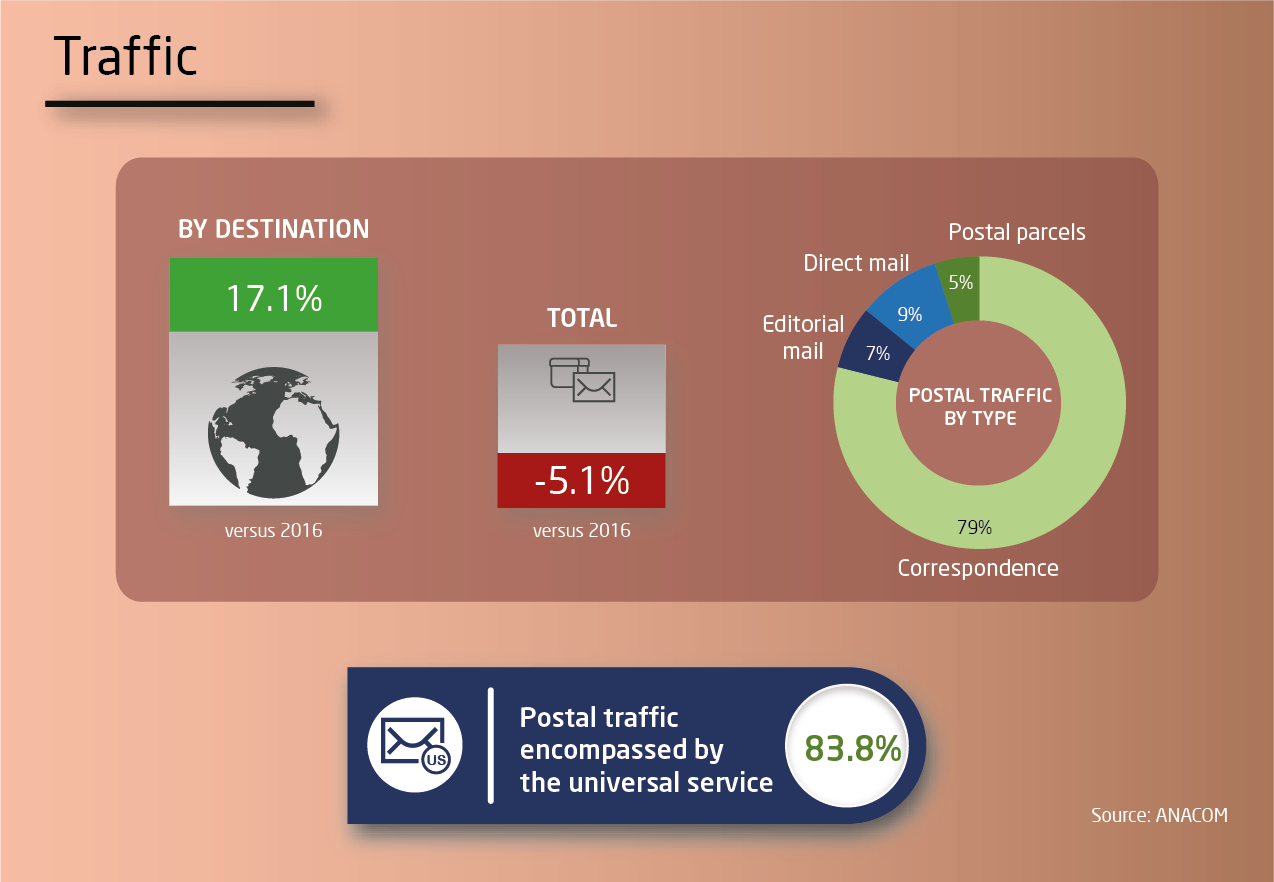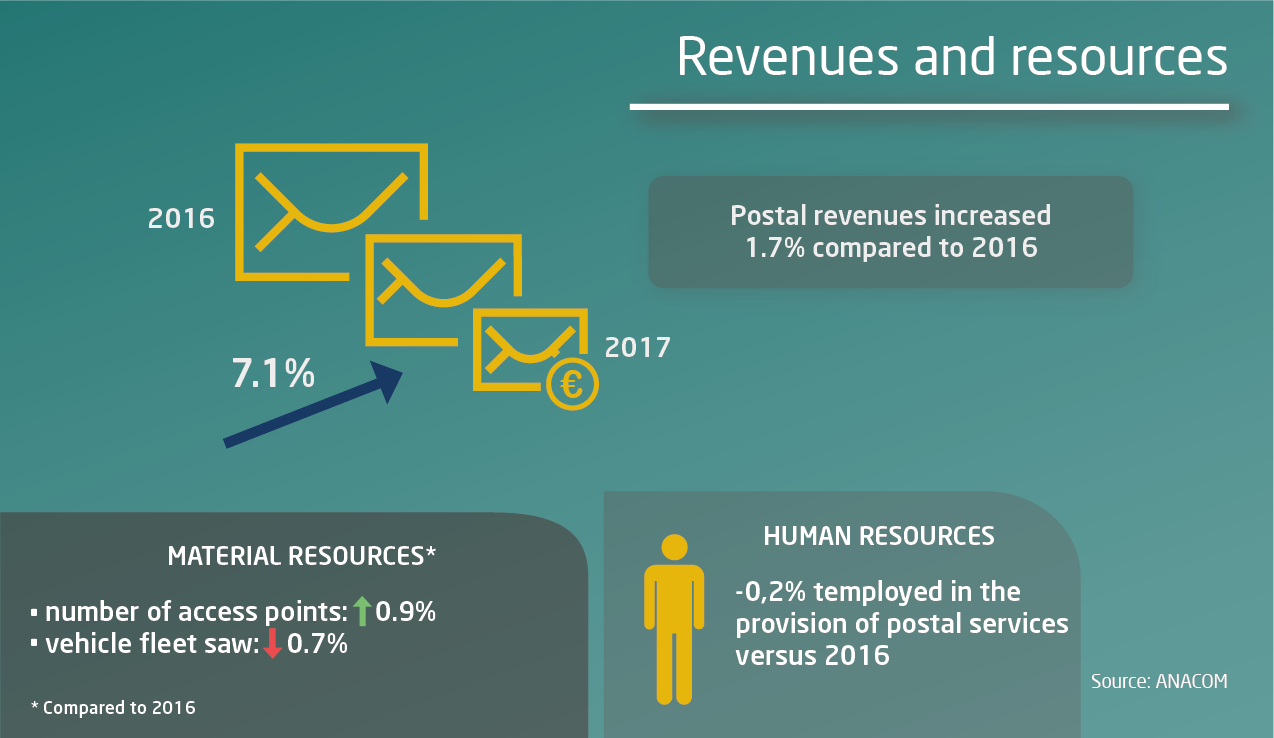Postal traffic continued to decline in 2017, by 5.1%, to 781 million postal objects. This trend has been experienced since 2013, with a cumulative decrease of 15.9%, according to the statistical report for the 4th quarter of 2017 published by ANACOM. The reduction of postal traffic is mostly due to postal communications being replaced by electronic communications.
Despite the overall reduction in postal traffic, incoming international mail performed positively, rising by 6.5% in 2017. However, this type of traffic accounts for only 5% of total postal traffic.
In 2017, parcels accounted for 5.1% of total traffic, 0.2 percentage points more than in 2016. Between 2013 and 2017, postal parcels registered a cumulative growth of 28.2%, rising by an average of 6.4% per year. In 2017, the increase was 3.1%, with the incoming international traffic doing particularly well as it increased by 17.4%, which is related to the development of global e-commerce.
In the period under review, CTT - Correios de Portugal had a 92.2% share of total traffic, while the other 68 providers operating in the market had the remaining 7.8% of share. Since 2013, CTT has seen its share reduced by 2.5 percentage points.
As for turnover, in 2017 revenues generated by providers legally qualified to provide postal services amounted to 649 million euros, 1.7% more than in 2016. Correspondence and parcels accounted for 67.3% and 25.8% of revenue, respectively.
The average revenue per item (excluding incoming traffic) increased 7.1% from 2016, to 0.83 euros, due to the price increase introduced by CTT on 4 April 2017, at the maximum allowed value, and the development in the revenues of another provider.
In the case of parcels, average unit revenue was 4.23 euros in 2017, 4.7% more than in 2016.
In 2017, the number of access points to the network increased by 0.9%, mainly due to the 9.2% increase in the number of access points of providers other than CTT. CTT increased network access points by 0.2%, an increase that occurred simultaneously with a reduction in the number of post offices. It should be noted that CTT met the network density criteria in force in 2017.
As a result of the increase in the number of network access points, postal coverage (14.9 access points per 100 square kilometres) and postal density (749 inhabitants per access point) improved.
Infographic of postal services - Traffic

Infographic of postal services - Revenues and resources

Consult:
- Serviços postais 2017 https://www.anacom.pt/render.jsp?contentId=1433905
- Network of postal establishments of CTT - Correios de Portugal, S.A., as at the end of 4th quarter 2017 https://www.anacom.pt/render.jsp?contentId=1436544




